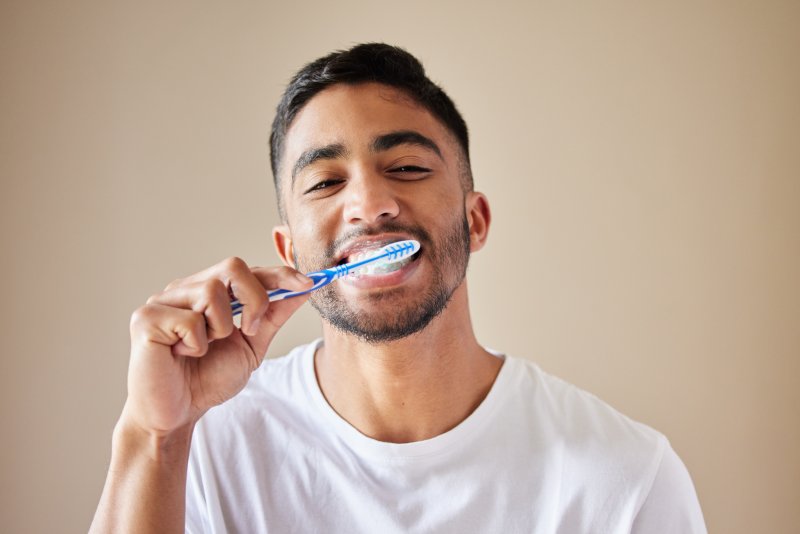
Many people assume that the harder you brush, the better off your smile will be. After all, some heavy scrubbing will get rid of all that plaque and tartar build-up, right? Before falling victim to this common misconception, consider just how damaging this approach can be. Brushing your teeth too hard can actually lead to oral health problems that require additional treatment to fix. Find out what issues can arise and what you can do to reduce your risk by taking a lighter approach to brushing.
How Can You Tell if You’re Brushing Too Hard?
You may not realize it at first, but various signs will indicate whether you are brushing your teeth too hard, such as:
- Gum recession
- Tooth sensitivity
- Worn-down tooth enamel
- Darkened teeth
What Problems Can Occur Because of Aggressive Brushing?
Even if you’re using a soft-bristled toothbrush, too much pressure can lead to serious problems if you’re not careful. While you should continue to clean your teeth twice daily (in the morning and at night), you will not be doing your smile any favors if you vigorously brush each time.
Some of the issues that can form as a result include:
- Gum Disease – You will notice that as your gums begin to recede, there is a greater risk of gum disease. As more of the tooth structure becomes exposed, bacteria can attack, resulting in inflammation, tenderness, and bleeding.
- Cavities – Hard brushing wears down tooth enamel, which makes your pearly whites more susceptible to decay. Because there is no longer a thick layer protecting your teeth from harmful particles, cavities are more likely to form over time.
- Root Exposure – Once the root of your tooth is exposed, you will find that it becomes increasingly sensitive, making it hard to consume anything hot, cold, or acidic. This most often happens when gum recession is involved.
How Can You Avoid It?
Although you might think that plaque is hard to remove, it is not. It is actually quite soft, which means that all you need is a soft-bristled toothbrush and a light touch.
When it comes to brushing, it is more about time spent than brushing hard. Making sure you angle your brush at 45 degrees (toward the gumline) will allow you to complete a thorough brushing of all surfaces. The sides of your teeth as well as the front and back need equal attention to minimize the potential of decay and bad bacteria.
You’ll want to make sure you’re moving your brush back and forth gently several times to adequately remove any existing plaque. All you need is minimal pressure to ensure the brush continues to move.
Following these steps will be helpful when it comes to practicing good oral hygiene at home. If you’re unsure about the method you’re using, don’t hesitate to ask your dentist or dental team for help.
About the Author
Dr. Sara Curcio is a trusted dentist in South Windsor who completed her dental degree at the University of Connecticut School of Dental Medicine in 2006. Dedicated to valuable patient education, she strives to help patients better understand their oral health and how to manage their hygiene routines at home. If you feel unsure about how to properly and safely brush your teeth, visit our website or call (860) 644-2476 to find out how we can help.
